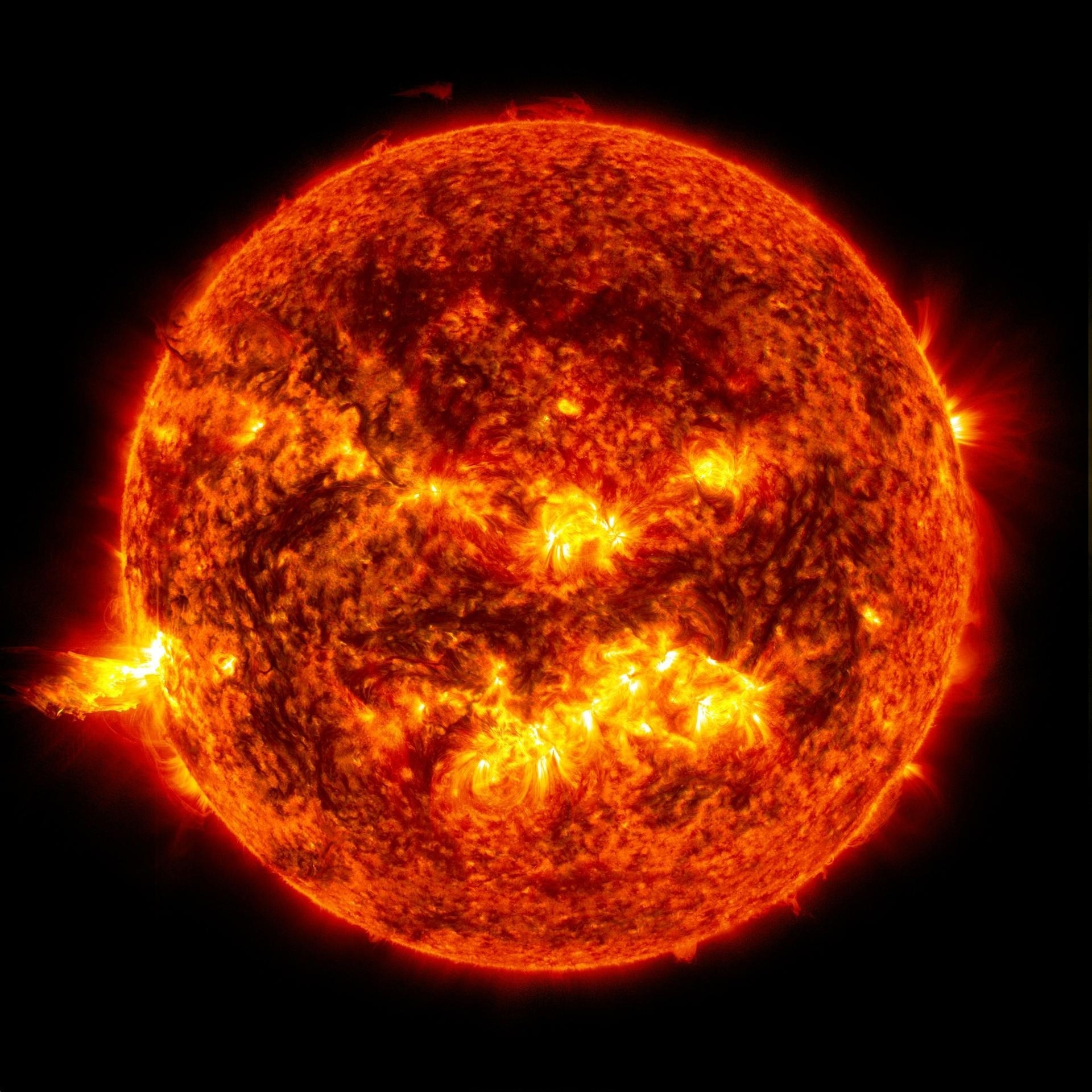Trained on nine years of high-resolution solar imagery, Surya acts as a “visual GPT for heliophysics,” helping scientists forecast coronal mass ejections and unravel the physics behind the Sun’s magnetic energy.

This image, taken on June 20, 2013, shows the bright light of a solar flare and an eruption of solar material shooting through the sun’s atmosphere, known as a prominence eruption. Shortly thereafter, the same region of the sun sent a coronal mass ejection out into space—a phenomenon that can cause magnetic storms, degrade communication signals, and cause unexpected electrical surges in power grids on Earth. NASA's new heliophysics AI foundation model, Surya, can help predict these storms. NASA/Goddard/SDO
NASA has launched Surya, its new heliophysics artificial intelligence foundation model, to empower solar scientists with tools to enhance research and space weather forecasting. Southwest Research Institute's Dr. Andrés Muñoz-Jaramillo led a team of scientists from several institutions and universities that played a crucial role in tailoring the scientific data and validating a powerful application to predict solar activity, including coronal mass ejections and other space weather events.
"Surya is like the visual GPT (generative pretrained transformer) for heliophysics," said Muñoz-Jaramillo, a solar scientist fluent in project leadership and machine learning. He works in SwRI's Solar System Science and Exploration Division in Boulder, Colorado. "We trained the model using vast amounts of high-resolution Solar Dynamics Observatory (SDO) data. This beautiful imagery reveals the activity of the Sun and provides insight into the underlying physics creating it."
SDO and the foundation model
NASA's SDO is designed to understand the causes of solar variability and its impacts on Earth by studying the solar atmosphere on small scales of space and time and in many wavelengths simultaneously. Developed by NASA in partnership with IBM and others, Surya represents a significant step forward in predicting space weather, which can have a severe impact on power, communication, aviation, and agricultural operations.
"The Sun contains a variety of structures, all governed by the same basic yet complex physics," Muñoz-Jaramillo said. "If you look at a movie of the Sun, you start recognizing elements such as active regions that are bright in ultraviolet or dark in visible light. You see loops and coronal holes. These structures repeat because they are produced by the same physics. With Surya, we are training an AI model to learn the visual language of the Sun, to establish relationships between various structures to better understand the overall solar environment."
Training and development
For the last 15 years, SDO has been continuously collecting high-resolution data using three instruments across multiple wavelengths better to understand solar activity and its effect on space weather. The only feasible way to truly exploit such massive data is with AI models. NASA is encouraging the science and applications community to test and explore this AI model for innovative solutions that leverage the unique value of continuous, stable, long-duration datasets.
Surya is part of NASA's Chief Science Data Officer's 5+1 strategy for AI, which involves building foundation models for each science division, plus one large language model that ties them together to accelerate discovery and decision-making. NASA's Interagency Implementation and Advanced Concepts Team (IMPACT) AI under the Office of Data Science and Informatics at NASA's Marshall Space Flight Center in Huntsville, Alabama, jointly developed Surya's AI architecture with IBM and a collaborative science team.
"We are advancing data-driven science by embedding NASA's deep scientific expertise into cutting-edge AI models," said Kevin Murphy, chief science data officer at NASA Headquarters in Washington, in a NASA article. "By developing a foundation model trained on NASA's heliophysics data, we're making it easier to analyze the complexities of the Sun's behavior with unprecedented speed and precision."
Performance and applications
"The 12 members of the science team developed performance metrics, while the overall Surya team leveraged the experience of building IMPACT AI's first foundation model for Earth science data, focused on satellite imagery about climate and landmasses," Muñoz-Jaramillo said. "Improving on the first model, the heliophysics model included scientists at every step in the development process, as well as changing the task used to teach the model from filling gaps to predicting the future."
The system was trained using nine years' worth of data from SDO's Atmospheric Imaging Assembly (AIA) instrument. The science team enhanced full-resolution data, correcting for instrument degradation or other data anomalies, while ensuring that it was temporally and spatially aligned.
"Surya uses transformer AI model architecture to revolutionize and add meaning to the data," Muñoz-Jaramillo said.
Future directions
The goal is to determine how the Sun's magnetic field is generated and structured and how its stored magnetic energy is converted and released into the heliosphere and geospace in the form of solar wind, energetic particles, and variations in the solar irradiance.
Ultimately, Surya could be extended beyond solar imagery to incorporate magnetograms, irradiance, and other heliophysics datasets—laying the foundation for a unified AI model of the Sun-heliosphere system.
"Translating the visual language may be kind of like translating a GPT from Spanish to Portuguese, languages that are very similar," Muñoz-Jaramillo said. "It requires work, but it can be done."
Collaboration and access
The science team, assembled by NASA Headquarters, included experts from SwRI; the University of Alabama in Huntsville; the University of Colorado Boulder; Georgia State University; Princeton University; NASA's Heliophysics Division; NASA's Goddard Space Flight Center in Greenbelt, Maryland; NASA's Jet Propulsion Laboratory in Pasadena, California; and the SETI Institute in Mountain View, California.
NASA is providing open access to the model and the code.
For more information, visit https://www.swri.org/markets/earth-space/space-research-technology/space-science/heliophysics.